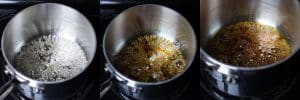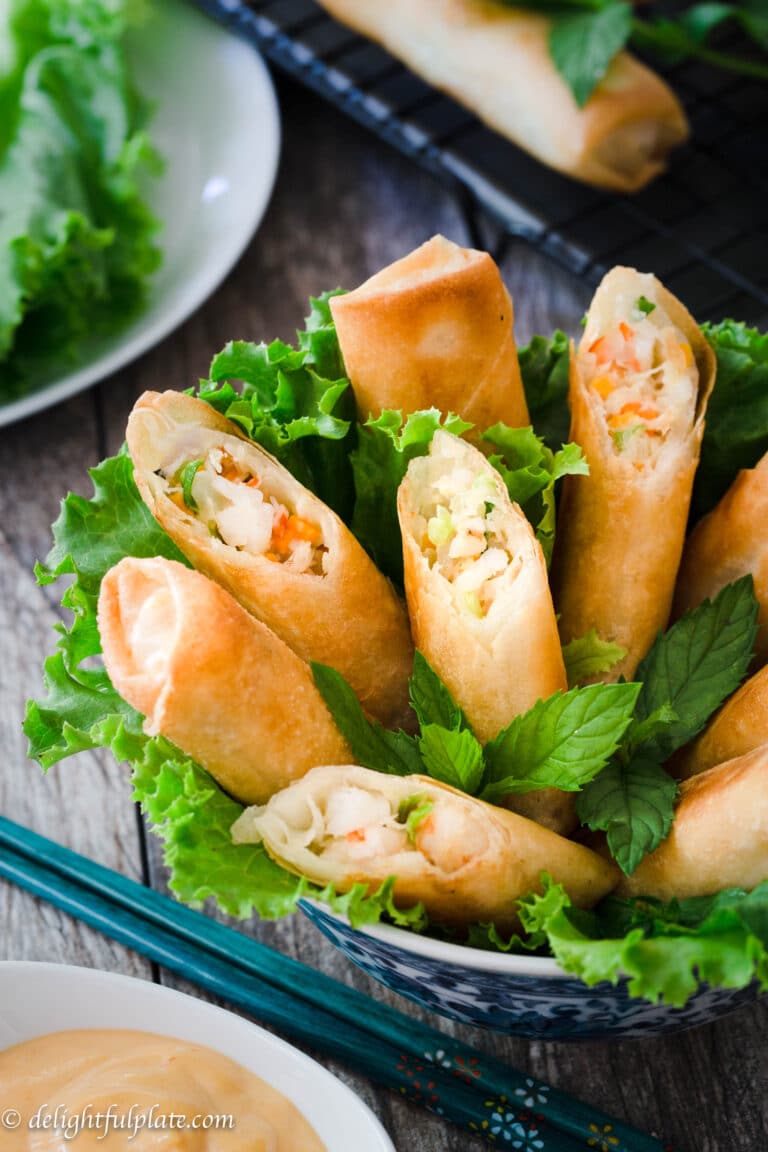Cá Kho – Vietnamese Caramelized Fish (Plus The Science Behind Cooking It)
Cá kho (Vietnamese caramelized fish) features fish braised in caramel sauce and fish sauce to develop a beautiful color and a deep, savory flavor that complements rice very well. This is classic Vietnamese home cooking at its best.

Just like everyone in Vietnam, we grew up eating caramelized dishes like cá kho and thịt kho tàu on a regular basis. You may hear people call caramelized fish cá kho tộ, which simply means braised fish in a clay pot in Vietnamese. In home cooking, we usually call it cá kho.
Fish sauce and caramel sauce (called kẹo đắng, nước màu or nước hàng) are two essential ingredients to create the deep color and flavor. In addition, there are many ingredients that can be braised with the fish depending on the taste preferences of each region and family – like galangal, tomatoes, tea leaves, or pickled mustard greens, just to name a few.
Types of Fish for Caramelizing
To people outside of Vietnam, cá kho may seem like just one dish, but in Vietnam, there are actually many variations. Every time a different type of fish is used, it becomes a different dish. Using different braising ingredients also creates diverse cá kho dishes as they may provide additional flavors and aromas.
It is possible to caramelize many types of fish, from seawater to freshwater varieties. For the authentic cá kho recipe I’m sharing today, I highly recommend using mackerel or oily/fatty fish with similar characteristics, such as pomfret (pompano).

The Application of Salt, Fat, Acid, and Heat
There is actually a little bit of science behind caramelizing fish and this dish is a good example of the application of salt, fat, acid, and heat in Vietnamese cooking. Overall, cá kho is not a quick dish and if you eat cá kho that has not been braised long enough, you may feel that the texture is not right and the taste may still be unpleasantly fishy.
Caramelizing fish involves a cooking process that has two opposing effects on the texture of the fish due to heat and the cooking environment.
- Firming effect of salt: The fish is cooked in salty seasonings to absorb flavors and firm up its tissues as salt causes water to move out of the fish’s tissues through osmosis. This makes them contract and become denser, thus making the fish firmer.
- Softening effect of heat: At the same time, the extended braising time allows the heat to break down the protein bonds in its muscle tissues and melt its fat. As these bonds break down, the fish becomes softer. Some people even cook ca kho for several hours to achieve their desired texture: firm yet tender inside and not dry. The bones can even become very soft.

Among all ingredients used to caramelize fish, there is always at least one that provides acidity. The acidity eliminates fishy odors through acid-base neutralization and balance the overall flavors by tempering excessive saltiness. In Vietnam, we have access to various sour ingredients to use in cá kho. For my family, we use lime juice, which is also an essential ingredient in the famous flavorful, firm, and fatty cá kho of Vũ Đại Village in Northern Vietnam.
So, that’s the interesting science side of cooking cá kho. This particular Vietnamese caramelized fish recipe is one of our family’s most favorite ways to make cá kho. I look forward to hearing how it turns out for you.
⭐️ I’d love to hear what you think about the dish, so please feel free to leave a comment and a rating if you have tried it. New recipes are added every week so let’s connect on Facebook, Youtube, Pinterest and Instagram for the latest updates. You can find my collection of Vietnamese recipes here.

Cá Kho (Vietnamese Caramelized Fish)
Ingredients
- 2.2 lbs whole mackerels or similar oily fish, cleaned and gutted (See Notes for more details)
- salt
- 2 tablespoons granulated sugar
- 1 cup plus 2 tablespoons water
- 2 oz galangal, peeled and thinly sliced (or substitute with ginger)
- 2 oz shallots, peeled thinly sliced (about ⅓ cup sliced)
- 10.5 oz tomatoes, sliced into thin rounds (about 2 large or 3 small-medium tomatoes)
- 2 tablespoons fish sauce (to taste)
- 2 tablespoons soy sauce
- black pepper
- 1-2 bird's-eye chilis (optional)
- 1 tablespoon lime juice
Instructions
- Cut mackerels into thick steaks, about 1½ inch thick. Discard the heads. You should have about 25-28 oz of fish steaks. Rub them with salt, then rinse and pat dry.
- Add the sugar and 2 tablespoons water in a small pot. Bring to a boil, the sugar will fully dissolve. Lower the heat to medium, continue to simmer. You will see a lot of bubbles on the surface.
- The mixture will then turn from clear to yellow, and get darker as you simmer it. When it has a honey color, reduce the heat slightly. Keep watching closely, until it has a dark caramel color, turn off the heat and carefully add the remaining water. Stir to dissolve the caramel completely and the caramel liquid should have a dark amber color.
- In a heavy bottomed pot, arrange a layer of galangal to cover the bottom, followed by shallots and then tomato slices, reserving just a few of them. Arrange the fish steaks so that they snuggle in a single layer. Scatter the reserved galangal, shallots and tomatoes over the fish steaks. Also add the bird's eye chili now if using.
- Add fish sauce, soy sauce, the caramel liquid in Step 3 and some black pepper to the pot. The liquid should be enough to cover the fish. Add a bit more water if not enough.
- Place the pot over medium to medium-high heat to bring the liquid to a boil. Once it starts to boil, add the lime juice. Lower the heat to a simmer and cover the pot to braise for about 1.5 hours. Occasionally spoon the braising liquid over the fish.
- After 1.5 hours, open the lid. Taste the braising liquid and adjust it to your taste, but remember it will get saltier as we continue cooking.
- Continue to braise the fish with the lid askew to let the liquid reduce. Turn off the heat when there is just enough sauce to coat the bottom of the pot (or sooner if you prefer more sauce).
Notes
Nutrition
If you prefer a quicker recipe, I recommend my cá hồi kho recipe (caramelized salmon). Salmon is quite a unique fish, and in that recipe we will pan-sear the salmon before braising it. The cooking process is slightly different and quicker.










